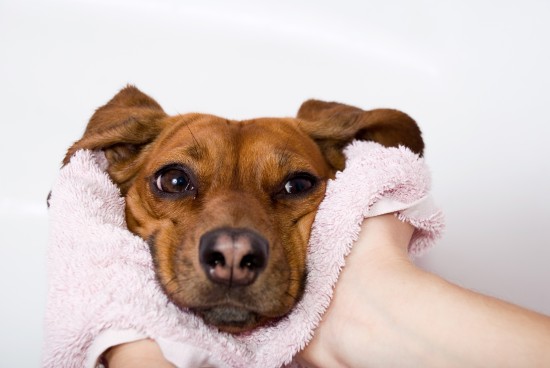
PREVALENCE AND INCIDENCE
Feline immunodeficiency virus (FIV) is found in 5-10% of ill
cats in the US; it is more likely to occur in older cats. Male
cats, especially free-roaming outdoor cats, account for up to
75% of all FIV infected cats. This virus is also called feline
AIDS because it behaves similarly to the human AIDS virus. While
transmission occurs between cats, there is no evidence of spread
to humans, dogs or other animals.
The virus is transmitted through saliva from fighting, biting
and mutual grooming and generally requires prolonged exposure
for transmission. Direct contact is required, and the virus is
short-lived outside the body in the environment so that it is
easily eliminated with most disinfectants.
Spread of FIV from a positive cat to others in the same
household happens infrequently. Nonetheless, introduction of a
FIV-positive cat into a household of healthy pets is not
advised. Isolation of a FIV-positive cat in a multi-cat
household is recommended but may not always be feasible. Keeping
a FIV-positive cat indoors will help limit spread of the virus
to other cats and help protect that individual from exposure to
other cat’s diseases and bites.
FIV TESTING
Detection of an infected cat is done by testing for antibodies
in blood or saliva. Cats that test positive should be re-tested
to confirm the diagnosis. This is especially important with
kittens since if they test positive, they may be truly positive
for FIV or they may transiently test positive from maternal
antibodies and thus, test negative later.
Negative results to the FIV test means- 1) the cat has had no
significant exposure to FIV or 2) the cat may have an early FIV
infection (before antibody production) or 3) the cat is infected
with FIV but since the virus has suppressed the body’s immune
system, no antibodies have been produced.
Positive results to the FIV test means that they have antibodies
to the FIV virus. Adult cats that are FIV positive will remain
so for life. Kittens less than 6 months of age that test
positive may have only been exposed to the virus but may not
actually be infected with the virus. For this reason, later
re-testing (ideally, in 4-6 months) is recommended once the
maternal antibodies have cleared.
“Healthy” FIV-positive cats
Some cats are infected with FIV but may not show signs of being
ill. They are “asymptomatic” but are still at risk for secondary
infections and are contagious to other cats. They can live a
good quality of life but are at risk for developing FIV-related
diseases during their lifetime.
Sick FIV-positive cats
When they are ill, they can develop chronic viral, bacterial,
fungal and protozoal infections that can affect the cats’ eyes,
respiratory or neurological systems. Oral and periodontal
disease, associated with severe inflammation of the gums and
mouth, is common with FIV. Cancer such as lymphoma and leukemia
can be associated with FIV infection. All these can debilitate
the cat and reduce its quality of life.
TREATMENT AND PREVENTION
There is no specific treatment for FIV. Anti-viral drugs have
not been successful in eliminating the virus. In some cats,
immuno-modulating medications such as interferon have been
helpful to improve the FIV positive cat’s quality of life.
Treatment is aimed at managing the complications of FIV
infection; antibiotics can be given to control the secondary
bacterial infections, and chemotherapy can be given to manage
cancer.
Recently, a vaccine has been made for FIV. There are concerns
about the vaccine’s ability to protect against all strains of
FIV so that vaccination must be considered according to the
individual’s risk factor. Once vaccinated, a cat will test
positive for FIV since the blood test detects antibodies and
cannot differentiate between a FIV-vaccinated cat and a
FIV-infected cat.
Prevention is done by spaying/neutering and keeping cats indoors
to minimize interactions with other cats such as cat fights and
sharing food bowls.
If you have any questions regarding this disease and its
treatment, don’t hesitate to contact your veterinarian.
The above is general veterinary information. Do not begin
any course of treatment without consulting your regular
veterinarian. All animals should be examined at least once every
12 months.
 Pet Friendly Accommodation
Many people today have pets and when it comes to vacati
Pet Friendly Accommodation
Many people today have pets and when it comes to vacati
 My Cat Skiibowski Loves To Play Fetch With His Sparkle Blue Ball, I Swear He Is Part Dog
We play fetch every day with my cat Skiibowski and it is
My Cat Skiibowski Loves To Play Fetch With His Sparkle Blue Ball, I Swear He Is Part Dog
We play fetch every day with my cat Skiibowski and it is
 Fatty Cysts Or Sebaceous Cysts In Dogs
Fatty Cysts Or Se
Fatty Cysts Or Sebaceous Cysts In Dogs
Fatty Cysts Or Se
 Caring For Your Dog After A Walk
Caring For Your D
Caring For Your Dog After A Walk
Caring For Your D
 Great Facts About Dogs That Might Surprise You
Great Facts About
Great Facts About Dogs That Might Surprise You
Great Facts About
Copyright © 2005-2016 Pet Information All Rights Reserved
Contact us: www162date@outlook.com